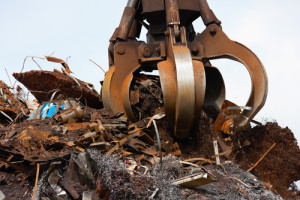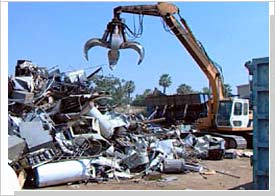 To help increase steel scrap utilization in steelmaking, China Association of Metalscrap Utilization (CAMU) has been lobbying the central government to lower the 17% tax on steel scrap sales. Recently, CAMU joined four other industrial associations, including the China National Ship Recycling Association, and petitioned the National Development and Reform Commission for preferential policies in steel scrap recycling, especially a tax cut, he said. “We have been in frequent communication with related Chinese authorities since 2011 when Beijing canceled the tax refund, explaining the necessity for the steel scrap sector to enjoy a lower tax. Now it is more pressing when China is shifting towards an eco-friendly economy as scrap is more environmental friendly than iron ore and coke in steelmaking,” he said.
To help increase steel scrap utilization in steelmaking, China Association of Metalscrap Utilization (CAMU) has been lobbying the central government to lower the 17% tax on steel scrap sales. Recently, CAMU joined four other industrial associations, including the China National Ship Recycling Association, and petitioned the National Development and Reform Commission for preferential policies in steel scrap recycling, especially a tax cut, he said. “We have been in frequent communication with related Chinese authorities since 2011 when Beijing canceled the tax refund, explaining the necessity for the steel scrap sector to enjoy a lower tax. Now it is more pressing when China is shifting towards an eco-friendly economy as scrap is more environmental friendly than iron ore and coke in steelmaking,” he said.
Every tonne of scrap used in steelmaking will reduce 1.6 mt of carbon dioxide emissions and 3 mt of solid waste. Beijing withdrew a 70% rebate on the 17% VAT for steel scrap recyclers in 2011, which has put China’s steel recycling industry at a disadvantage against iron ore that is becoming more affordable. China’s steel scrap utilization fell to 110 kg/mt in 2013 from 117 kg/mt in 2012, Li said. “Crude steel production using scrap now is about Yuan 200 ($32.40)/mt higher than iron ore, which we can’t afford as sometimes our gross profits per mt are not that much,” a procurement official from a steel mill in central China said on the sidelines of the conference. The company has been limiting scrap utilization to 10% of its total use in steelmaking for now.
 A resumption of a 50-70% discount on the 17% VAT for steel scrap will, however, lead more mills to reconsider the proportion of scrap utilization, he added. Zhu Jimin, vice chairman of the China Iron & Steel Association, nevertheless, was optimistic about the tax cut on scrap. China is the world’s largest steel producer with crude steel output reaching 780 million mt in 2013, which was about 48% of the world’s total production. Most mills now moving to blast furnaces that use mainly iron ore and coking coal also contributed to lower steel scrap consumption, market sources added. China’s steel scrap utilization for steelmaking was merely 11% in 2013 compared with 32% in 1994.
A resumption of a 50-70% discount on the 17% VAT for steel scrap will, however, lead more mills to reconsider the proportion of scrap utilization, he added. Zhu Jimin, vice chairman of the China Iron & Steel Association, nevertheless, was optimistic about the tax cut on scrap. China is the world’s largest steel producer with crude steel output reaching 780 million mt in 2013, which was about 48% of the world’s total production. Most mills now moving to blast furnaces that use mainly iron ore and coking coal also contributed to lower steel scrap consumption, market sources added. China’s steel scrap utilization for steelmaking was merely 11% in 2013 compared with 32% in 1994.



